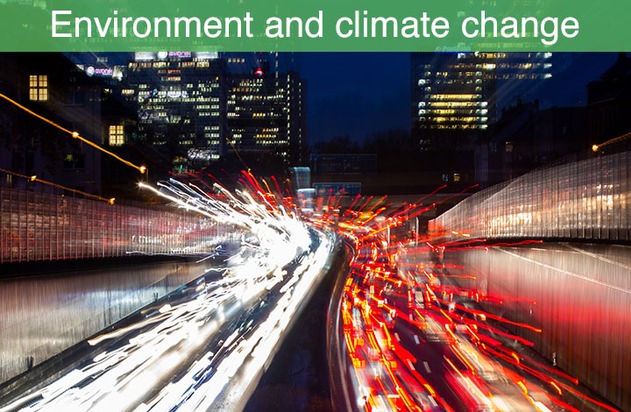The European Union's policies for climate and the environment
Air and water pollution, the increasing frequency of extreme weather events and the continuing extinction of species - the effects of environmental contamination are diverse, and they can't be contained by national borders. That's why the member states of the European Union have continuously intensified their collaboration in the area of environment and climate policy over the past few decades. Today, the environment is seen as one of the EU's most important policy fields, and one in which the bloc has far-reaching competencies. That hasn't always been the case.
Towards a common environmental approach
When six European nations came together in 1957 to establish the European Economic Community (EEC), the environment wasn't very high on the agenda - in fact, the Treaties of Rome, the bloc's founding documents, don't mention environmental policy at all. It wasn't until the Single European Act came into effect thirty years later that a legally binding foundation was created for a common environmental policy.
The Maastricht Treaty, under which the EEC was merged into the European Union in 1993, made the environment an official area of EU policy. The Lisbon Treaty, which came into force in 2009, explicitly declared the fight against climate change a political objective. Today major portions of the environmental laws of the European member states are based on EU requirements. According to the German government, around 80 per cent of the country's relevant legislation has been devised in Brussels.
Diverse policy goals
The environmental policy of the European Union has a number of different objectives. It is designed to protect the environment and its resources as well as the health and well-being of all European citizens. It also aims to make the economy across the EU more environmentally-friendly and more resource-efficient while at the same time preserving its competitiveness.
In order to accomplish its goals, the EU adopts numerous acts of law, which are legally binding for the member states and their citizens. They stipulate concrete measures and goals, for example for keeping the air and water clean, the proper disposing of waste, the protection of natural habitats, or the handling of toxic substances. The measures are devised to adhere to the principles of precaution and prevention, the principle of fighting environmental damage at its source as well as the "polluter pays" principle.
Concerted implementation
In order to provide general frameworks for its environmental policies, the EU regularly issues so-called Environment Action Programmes (EAPs). They contain the bloc's most important goals as well as medium and long-term strategies and concrete measures. Since the early 1970s the EU has adopted seven EAPs. The current programme is called "Living well within the limits of our planet" and covers the period from 2013 to 2020. Its objectives include the protection of the environment and its resources and the conversion into a more resource-efficient, green and competitive low-carbon economy. The programme also aims to better protect the health of all EU citizens from environmental pollution.
Recent implementation successes
The EU's most recent environmental policy measures include the Circular Economy Package, a set of rules adopted in mid-2018. It harmonises waste disposal legislation in the member states and increases recycling quotas in an effort to make their economies more circular. The aim is to use raw materials more efficiently while at the same time driving down the amount of waste. The EU also agreed at the end of 2018 on measures to reduce the prevalence of plastic waste in the world's oceans - from 2021 a ban on single-use plastics will make the production of disposable items such as cutlery, plates and straws illegal.
In late 2016, a new EU directive aimed at decreasing air pollution obliges all member states to further decrease emissions of pollutants such as sulphur dioxide, nitrogen oxide and ammonia. The measures affect road traffic, furnaces for industrial and private use as well as agriculture. In its fight against climate change, the EU has vowed to reduce its greenhouse gas emissions by 2030 by at least 40 per cent as compared to 1990 levels. At the same time, energy efficiency is to increase by 27 per cent while renewable energies are to cover at least 27 per cent of the EU's overall energy consumption. By 2050 the EU aims to make its economy nearly climate-neutral by reducing greenhouse gas emissions across the bloc by at least 80 per cent compared to 1990 levels.
[Attention: These images are intended exclusively for editorial use in connection with the current coverage and may be used only when using the copyright notice "Photo: dpa".]

